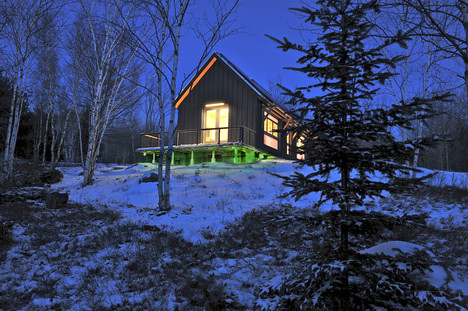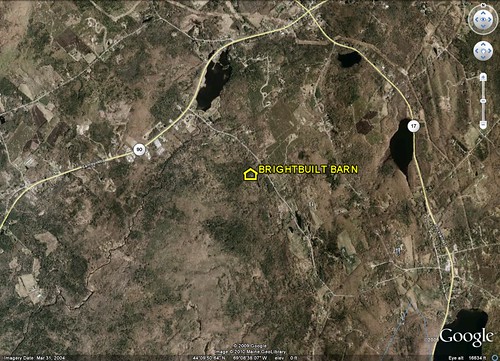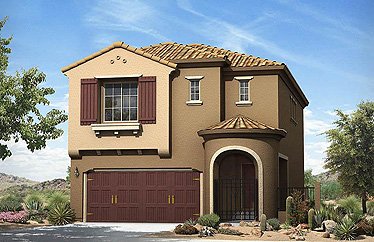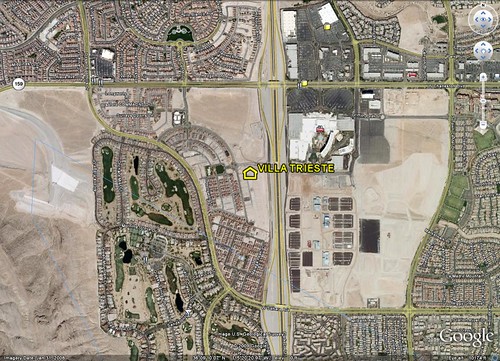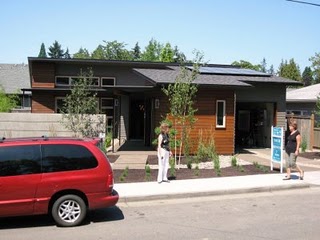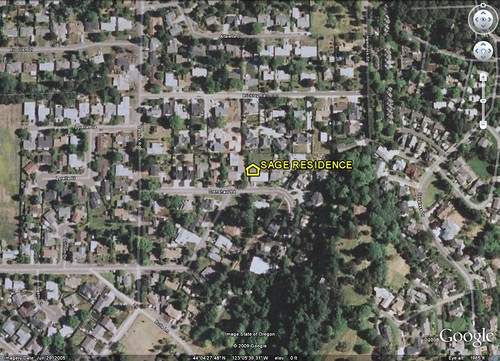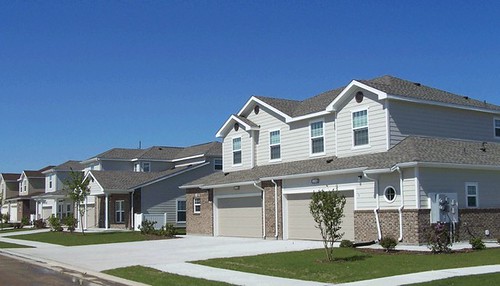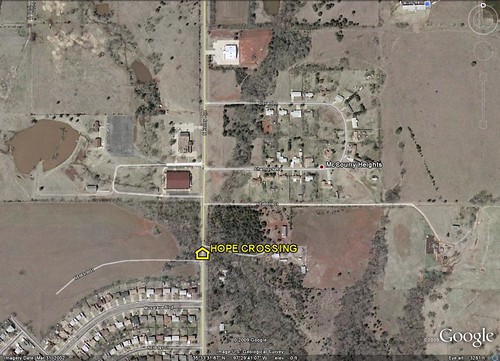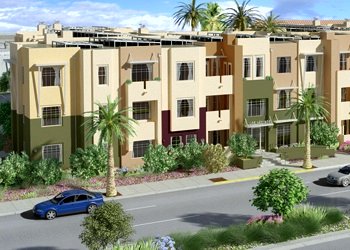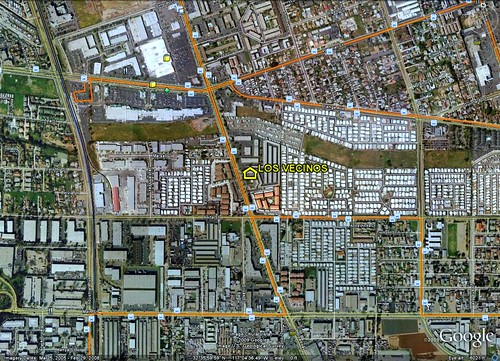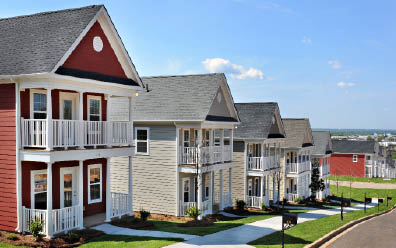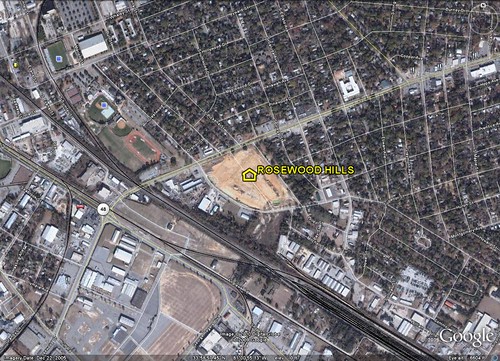LEED awards show why ‘green’ criteria need reform

Posted January 11, 2010 at 1:35PM
Bear with me: this is a bit of an essay.
The US Green Building Council, which NRDC supports and to which we donate lots of staff time, including mine, is a terrific organization that has done a lot for the environment and arguably has changed the paradigm for building construction and operation in this country. Much of this has been accomplished through the organization’s flagship certification program, LEED, which awards platinum, gold, silver, and certified ratings to buildings based on environmental criteria. The US is closer to being sustainable than it would be without their impressive body of work.
But the Green Building Council also has a reputation for emphasizing bells and whistles – building technology – in its criteria defining what makes a building “green,” often overlooking or minimizing building-related factors that can be more significant to the environment.  Building location, the availability of transportation choices, and the resource savings inherent in the reuse of older buildings are among the more commonly cited of these. Perhaps this is not surprising given that the organization’s membership, board and committees are overwhelmingly populated by representatives of the building industry, their architects, and their consultants.
Building location, the availability of transportation choices, and the resource savings inherent in the reuse of older buildings are among the more commonly cited of these. Perhaps this is not surprising given that the organization’s membership, board and committees are overwhelmingly populated by representatives of the building industry, their architects, and their consultants.
The organization’s 2009 LEED for Homes award winners – the very best of the best, in USGBC’s judgment – prove that its reputation for stressing technology over other factors is well-deserved. Of the six non-military winners, only one is in what the popular rating service Walk Score considers to be a walkable environment. Only one (the same) shows up on Google Earth as richly served by public transportation. The rest are in locations best described as varying degrees of automobile-dependence and sprawl.
One result is that the added environmental benefit of the residences’ laudable green features will be offset by the environmental damage caused by the sites’ automobile dependence, poor environment for walking, and relative distance from jobs, shops and services. Another result is that the public, the building industry, and policy makers will continue to be misled about how best to achieve true environmental performance in our built environment.
Going in the order presented by the organization’s press release, here are the winners, the descriptions in the release, and some additional information and commentary by me:
“This year’s Innovative Project award was given to the Platinum certified BrightBuilt Barn project, the result of a two-year collaboration between Kaplan Thompson Architects, Bensonwood Homes and a team of green building experts from throughout the northeast U.S. BrightBuilt Barn was recognized for implementing innovative strategies and techniques that go above and beyond the scope, requirements and prerequisites within the LEED for Homes rating system.”
Above is an image of the project’s location, on Spruce Mountain in Rockport, Maine, on Google Earth. In Walk Score, which measures and rates a site’s proximity to common shops, goods and services, the location gets a 6 - yes, 6 - out of 100 (From Walk Score: “Car-Dependent/Driving Only: Virtually no neighborhood destinations within walking range. You can walk from your house to your car”). There is, as you might expect, no discernible transit service. The site also reports that 92 percent of its users nationally have a higher score than that of the platinum-certified award winner.
The BrightBuilt Barn is an accessory building for owners who also own a nearby 4,400-square foot house that they use as a second home.
“Pulte Homes was honored with the Outstanding Production Builder Award for its Villa Trieste project, located in Las Vegas, NV. Villa Trieste is planned to be a community of 185 LEED Platinum single family homes, which will place it firmly among the ranks of the largest LEED for Homes project to date. Pulte’s commitment to LEED Platinum certification for all homes in the Villa Trieste community sets an example of excellence for builders and project teams across the country.”
Villa Trieste does better than the BrightBuilt Barn, with a Walk Score of 38 out of 100 (“Car-Dependent: Only a few destinations are within easy walking range. For most errands, driving or public transportation is a must”). There is a bus stop 0.52 miles away, but that is outside the 1/8-1/4-mile range generally considered by transit experts to be the farthest most people will walk to bus service (people will walk farther to rail transit). The site reports that 92 percent of Las Vegas residents have a higher score. The design of the homes certainly is consistent with the autombile-oriented setting.
To get a bit technical for an important sentence or three, another important determinant of walkability but one not captured by Walk Score’s ratings is street connectivity, measured as intersection density, or the number of intersections per square mile. The better connected a neighborhood’s streets, the more direct and convenient the walking (and driving, for that matter) options.
The walkability experts on the LEED for Neighborhood Development core committee concluded that, for a location’s surroundings to be even minimally acceptable, they must have an intersection density of at least 90 per square mile; any new streets should be built to a minimum of at least 140 intersections per square mile. (These measures are not overly demanding. At the upper end, the smart growth development Highlands’ Garden Village in Denver has over 800 intersections per square mile.) The area of the Villa Trieste site and its immediate surroundings has been measured at 15 intersections per square mile.
“In the Outstanding Single Family Project category, Arbor South Architecture’s the SAGE home in Eugene, OR was recognized an as example of leadership in the green residential movement. The SAGE home earned 109 points in the LEED for Homes rating system, among the highest scores ever achieved.”
From the Google Earth image, the Sage residence appears to be in a typical suburban setting. Its Walk Score is 43 out of 100 (“Car-Dependent: Only a few destinations are within easy walking range. For most errands, driving or public transportation is a must”). 73 percent of Eugene residents have a higher score. In addition, the neighborhood has an exceptional lack of street connectivity at only four intersections per square mile. On the plus side, there at least is a bus stop a quarter mile away.
“Hunt Yates received the award for Outstanding Commitment to LEED for Homes for its Keesler Air Force Base project in Biloxi, MS. Hunt Yates is a unique partnership between the Hunt Building Company and W.G. Yates & Sons Construction Company. The Keesler project currently has 792 registered single family homes pursuing LEED for Homes certification.”
Keesler’s on-base housing was totally destroyed by Hurricane Katrina and is being rebuilt to LEED standards. Data were not available for Walk Score, transit or connectivity and, frankly, a military base is a very special situation. While the housing design looks extremely automobile-oriented in the photo, and better models are available for military housing, I’m glad these airmen and women and their families are getting new homes, and we should all be grateful to them for their service and their post-Katrina patience.
“Central Oklahoma Habitat for Humanity’s Hope Crossing project was selected to receive the Outstanding Affordable Housing Project award. The project is a 59-acre affordable housing development that once complete, will be the largest LEED certified Habitat for Humanity community in the U.S. OG&E, the local energy utility, donated upgraded windows, efficient foam insulation and compact fluorescent lights that help contribute to an expected 50% reduction in monthly energy bills.”
Since Hope Crossing’s homes have not yet been rated by the Green Building Council, we do not know what the level of certification will be. We do know that the project appears to be on the outer fringe of the region and that the plan comprises 217 homes on the 59-acre site, for a raw density of between three and four homes per acre. The Walk Score is a shocking 3 out of 100 (“Car-Dependent/Driving Only: Virtually no neighborhood destinations within walking range. You can walk from your house to your car”). While Oklahoma City is not exactly known for its urbanism, fully 95 percent of the city’s residents enjoy locations with a better score. There is no transit information for the location in Google’s database.
There is always much to appreciate about a Habitat project, and one hesitates to be critical of their important work. But many providers of affordable housing, including Habitat elsewhere, have chosen more accessible sites and more walkable design. This is especially important to their clients because the affordable housing constituency more than any other needs convenient access to keep transportation costs down. Judging from the Walk Score data, the only thing that likely kept this site from scoring even worse is a park 0.59 miles away - but, due to poor street connectivity (I don’t have the intersection number for this one), the actual walking distance is well over a mile.
“In the Outstanding Multifamily Project category, Wakeland Housing & Development Corporation’s Platinum certified Los Vecinos project in Chula Vista, CA was selected for its outstanding performance within the LEED for Homes rating system. The affordable housing project consists of 42 apartment units rented to families earning 60% or less of the area median income. With 90% of its energy generated onsite, the property is on average 39% more energy efficient than comparable properties following California energy efficiency standards.”
May we have some applause, please, for the one winner that can rightfully claim to be green not only in building technology but in actual environmental performance in a holistic sense, and with true affordability when both housing and transportation costs are considered? The project earns a Walk Score of 72 (“Very Walkable: It's possible to get by without owning a car”), higher than two-thirds of Chula Vista residents as a whole. That makes it the only one of these winners that beats its community’s average for walkability. See those orange lines in the Google Earth image running right by and all around the site? Those are transit lines, punctuated by little blue squares marking transit stops. Bravo.
“The Columbia Housing Authority received the Outstanding Affordable Developer award for its Rosewood Hills project in Columbia, SC. Rosewood Hills features a diverse mix of apartments, townhomes, senior citizen housing and single family homes catering to a range of incomes.”
This is the best-scoring of the car-dependent projects, with a Walk Score of 48, the same as the average for Columbia residents as a whole, and just two points short of the lower end of what Walk Score considers to be “somewhat walkable.” One can tell from the Google Earth image that it is in a somewhat more urban setting than the other sites, much more so than BrightBuilt Barn, Villa Trieste and Hope Crossing. It looks like a redevelopment site, which is good. But it is still car-dependent and only average, not superior, compared to the rest of its community when it comes to walkable destination accessibility.
There are no transit data available in Google’s base, because the local transit provider has not made its GIS information fully accessible to the public. But the data available show that the Rosewood Hills site (where are the hills, by the way?) is a quarter-mile from the University of South Carolina’s athletic center, a public park, and the End Zone restaurant. Most neighborhood amenities, however, are between a half-mile and two miles away. There is much to like about this project's concept and its design, and if asked to take a position I would absolutely support it. But given its distance from places where its residents will be running their errands (and the emissions they will release when they do) I have a hard time agreeing that it is environmentally "the very best of the best" of its kind.
Which sort of brings us to the ultimate point: These are not necessarily bad projects at all, and the ones with subsidized affordability are praiseworthy apart from environmental concerns. (I am pleased that three of the seven winners are affordable to working families and a fourth is for military personnel.) Given their building features it is not necessarily wrong for the Green Building Council to certify them at an appropriate level of "greenness." Perhaps doing so will give sprawl developers and luxury second-home builders more incentive to at least incorporate green technology in their designs.
But to certify them at the highest level attainable? Don’t you think that, if we’re going to highlight not just certified projects but award winners deemed to be the very best, we should select more of them in high-performing (or, jeez, just better than average) sites? Remember all that evidence demonstrating that the market for housing is shifting (see also here) rapidly in favor of more walkable, mixed-use, urban settings? 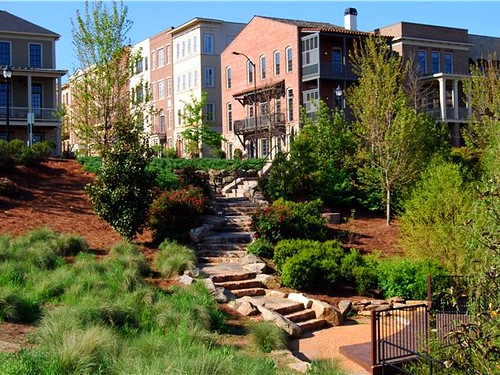 Remember all the terrific innovative, green projects reported in this blog on redevelopment sites in accessible locations? (For example, Denver; Atlanta, image left; Cincinnati; Rockville, MD; Seattle; San Mateo; Oakland.) Apparently the Council didn’t get the memo, or doesn’t believe what it says.
Remember all the terrific innovative, green projects reported in this blog on redevelopment sites in accessible locations? (For example, Denver; Atlanta, image left; Cincinnati; Rockville, MD; Seattle; San Mateo; Oakland.) Apparently the Council didn’t get the memo, or doesn’t believe what it says.
Beyond changing market preferences and common sense, research proves that we use more energy getting to and from a building than does the building itself, and that even the greenest suburban household, on average, will not match the energy- and emissions-reduction potential of an ordinary household in a more urban location (see also here), to say nothing of a green urban household. Nationally, transportation is the fastest-growing source of carbon emissions, contributing more to the total than do either residential or commercial buildings (and only slightly less than those two categories combined). Location matters immensely to the sustainability of development.
Yet LEED for Homes assigns only ten of its 136 available credit points, and none of its prerequisites, to the “location and linkages” category.
The usual arguments in favor of continuing to give location such short shrift are (1) to transform the market, we must meet the market where it is, not where we wish it were, and (2) “but the architect/builder/engineer doesn’t choose the site.” I’m not persuaded by either. On the subject of market transformation, building site choices are part of the market that must be transformed. We must reward those who make the right choices for the environment much more than we reward those who don’t. Besides, the market has changed already, so that these award winners are much less representative of the housing market as a whole than they used to be.
As for who chooses the site, LEED certifications benefit developers every bit as much as they do designers, perhaps even more so. Developers do make site choices and absolutely should be encouraged to make better ones. As I said above, I’m not arguing here that these platinum-certified, national award winners aren’t at all “green.” 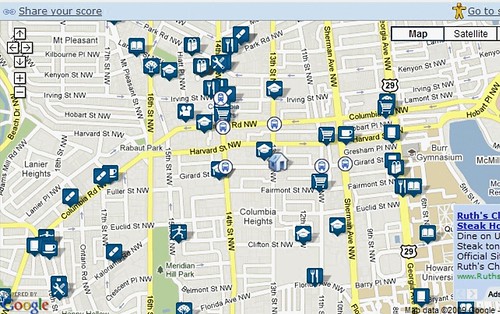 But I am arguing that there are much more deserving examples (including virtually any of the many green, affordable, urban housing projects built by Jonathan Rose Companies - full disclosure: a friend and NRDC trustee) if we are going to name the very best. (Image with this paragraph: DC's Columbia Heights, where much new housing has been built; Walk Score 92.)
But I am arguing that there are much more deserving examples (including virtually any of the many green, affordable, urban housing projects built by Jonathan Rose Companies - full disclosure: a friend and NRDC trustee) if we are going to name the very best. (Image with this paragraph: DC's Columbia Heights, where much new housing has been built; Walk Score 92.)
A better answer might be that LEED for Neighborhood Development does emphasize location, transit access, walkability, and proximity to shops and services (in addition to green technology). It is the new-generation definition of what is green under LEED, and it has now been piloted, completed, fully approved by the partners who developed it (including NRDC, along with the Green Building Council and the Congress for the New Urbanism), and published for all to see. But, for reasons best known to the Green Building Council's leadership, developers are not yet allowed to use it. Past LEED-ND chair Doug Farr has suggested that compliance with LEED-ND’s standards should be a baseline requirement at least for platinum-level certification under other parts of LEED. How about it?
As noted, I salute the Green Building Council for their outstanding work for sustainability. The environment is better for it. Without exception, the staff members I have met from the organization have been bright, dedicated and professional. I also am proud that NRDC has contributed as much as we have to the Council's undertakings, and I hope we will continue to do so.
But It is past time to take the important work of promoting green building to the next level. We know a lot more about the factors that determine the performance of our built environment now than we did when the LEED template was established. It is time to be much more candid to ourselves, the public, and policy makers about the environmental damage done by even good buildings in bad or mediocre locations, and to start doing something about it.
For a parallel discussion on the LEED for Homes award winners, includng a critique of their design, see Steve Mouzon's the Original Green. Many thanks to Hank Dittmar for pointing me to articles about the LEED awards.
